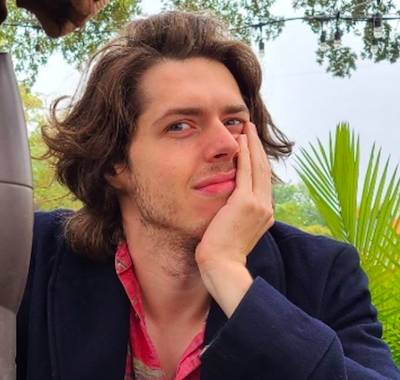“Evil Dead Rise” Makeup & FX Artist Tristan Lucas on Loose Limbs, Buckets of Blood, & That Cheese Grater Scene
Evil Dead Rise keeps the spirit of the franchise alive by conjuring the living dead in the most emphatically gnarly way. The fifth installment in the horror franchise is a bloodbath of riches, full of wondrous practical effects and makeup. Most of the body horror in director Lee Cronin’s film is tangible, not computer generated, the work of talented artists at the top of their gore game.
Senior makeup FX & prosthetic artist Tristan Lucas is one of the artists responsible for the horrific delights on display, including a stellar cheese grater sequence you have to see to believe. Based in Australia, Lucas dreamed of working on horror movies thanks to the likes of Sam Raimi’s original Evil Dead, so the job was a nightmare come true.
In addition to Evil Dead Rise, he’s worked on an Alien prequel and a Mad Max film. “I’ve been very lucky to do what I do,” Lucas says, “and it still doesn’t make sense to me sometimes that I get paid to make monsters and throw blood around. It’s crazy, but I wouldn’t want anything else.”
Recently, Lucas told us about splashing buckets of blood around—a whole lot more—in Evil Dead Rise.
Obviously, you’re dealing with a lot of limbs in this movie. What is the hardest part of the body to create for a horror movie?
A head, for sure. Just for likeness purposes. It has to look like that person, so we do life-casting of that person where we make a copy of their face. But there are subtle changes happening; even the weight of the material that we use for the impression pulls the face down a bit. Eyes especially make or break a fake head. An arm, a leg, anything like that, those body parts are kind of generic. With a face, it has to look exactly like that person, or it’s going to look fake.
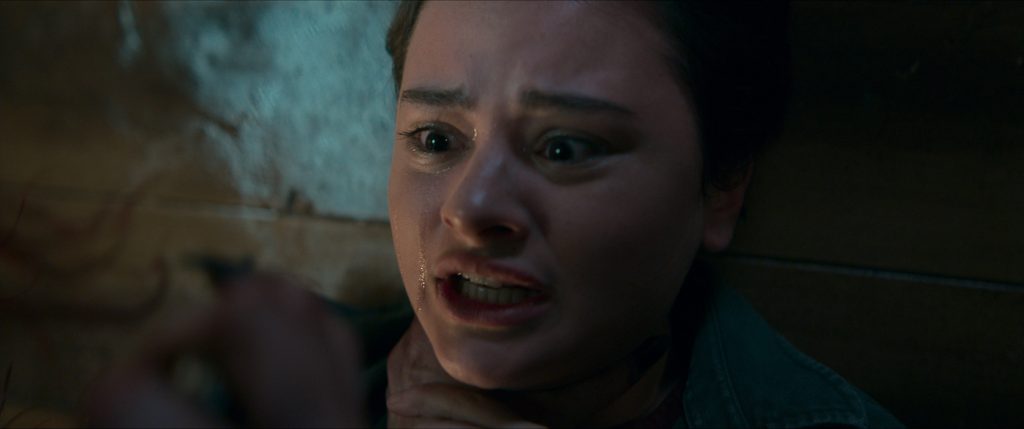
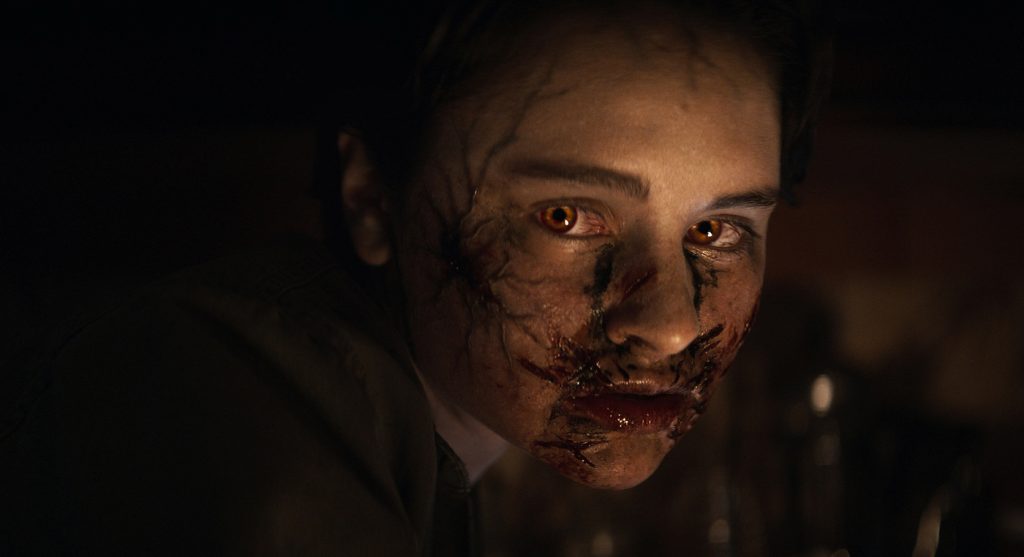
How do you get the eyes right then?
Carefully (Laughs). Generally, we’ll take a very high-definition photo up close. Back in the day, they used to be hand-painted to match. These days we cheat a bit and mostly print it. We literally do a photo-quality print of the eyes. There’s something about the gloss of an eye and the depth, like the pupil, that if it is a cheap eye or it doesn’t look right, the whole head looks wrong. Whereas you could also take a head that’s not perfect, but if it’s got really good eyes that look wet and have that depth, then it kind of sells better.
Which gnarly effect was, in your mind, one of the toughest moments to sell?
I think the gnarliest moment I did was the cheese grater.
How was that pulled off?
That’s a great combination of practical and visual effects. There are not a lot of visual effects in the film to do with our makeup unless it’s gags. Basically, there was a clean shot of the leg they filmed, and then we put a prosthetic on it and had tracking markers around it, and then they had a cheese grater with the side touching the skin missing essentially, and it’s just graded down over it. Visual effects [artists] then did the blend between the two as they reveal. It was a great way for the two departments to work together when sometimes there can be a bit of animosity between them.
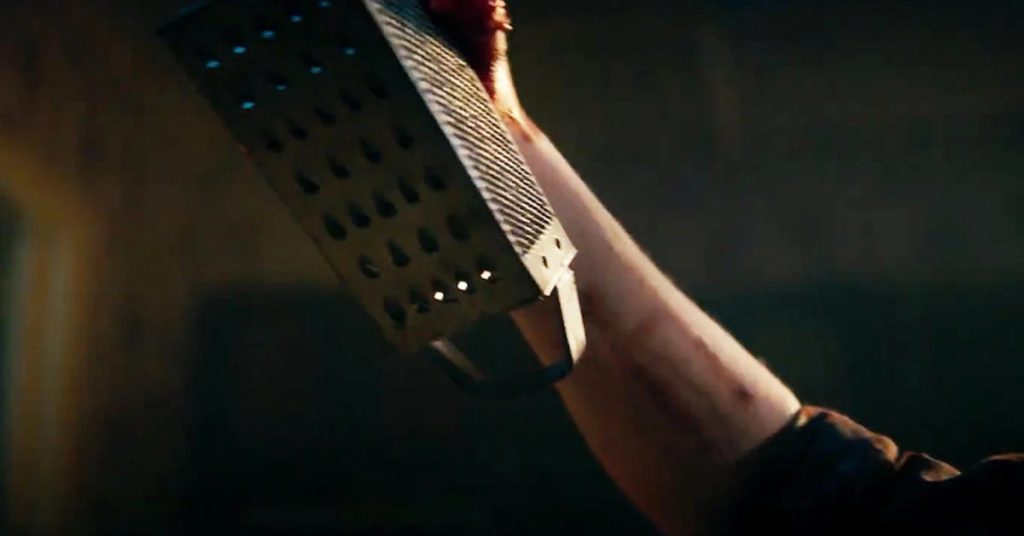
Oh, really? Why is that?
Yeah, although practical blood is having a bit of a resurgence lately, visual effects have been taking over in terms of blood these days. It’s very often digital blood.
It rarely looks good.
It never looks good, but it happens a lot. We’re losing some work to it, but the best way is [for us to] work together. The cheese grater is a great example of that. The only thing they did for our makeup, really, is the eyes. They decided not to do contact lenses in this film for the comfort of the actors. On this, all the eyes are digital, and all the contacts are digital, but it works really well because it gives our actors a chance not to have to worry about being in pain or being uncomfortable. It lets them do their job better. The end result is we get this fantastic look with crazy eyes.
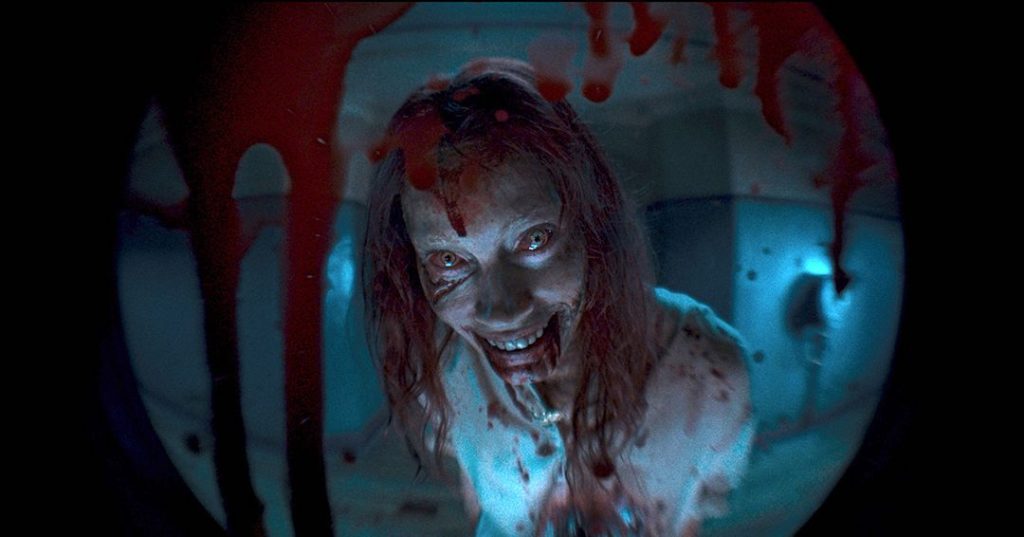
Circling back to blood, what are the nuances of making it sell on film or, more specifically, on an actor’s face?
There are little things, like thinking about the way gravity will affect blood flow and the volume of blood out of a specific injury. I saw something the other day, I can’t remember what it was, but someone got shot in the arm, and then there was blood coming out of their mouth (Laughs). You’re like, that wouldn’t happen unless it’s deliberately comedic or something. The volume of blood is a big one. If someone’s losing liters of blood, and then ten scenes later, they’re still alive? I don’t know about that.
So your goal is to create a realistic amount of blood flow depending on the type and placement of the wound.
With gravity, it’s making sure the blood flow matches. If someone gets hit and falls down, blood’s gonna flow the direction they’re lying, not straight down their face. The continuity of the blood is a big one. It’s about making sure it stays the same as well as you can for the whole shoot. It gets tricky on something like Evil Dead Rise, where you have people literally covered head to toe in blood. You never want someone to say, “Oh, that’s a prosthetic.” You want it almost not to be noticeable. You have a photo of the blood from yesterday, and you just have to match it. But when you have someone that has so much blood on them, all of a sudden, you’re spending 45 minutes trying to copy the drips down. It’s little things like that that aren’t difficult, but if you do them wrong, it looks bad.
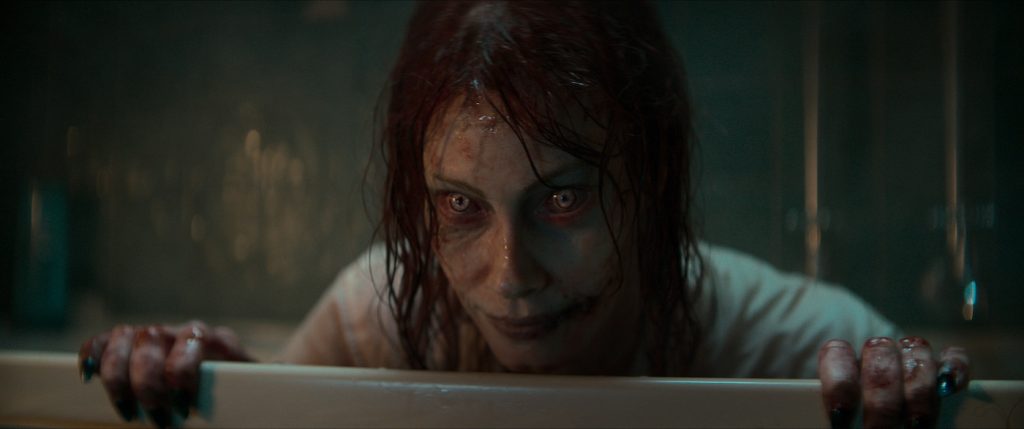
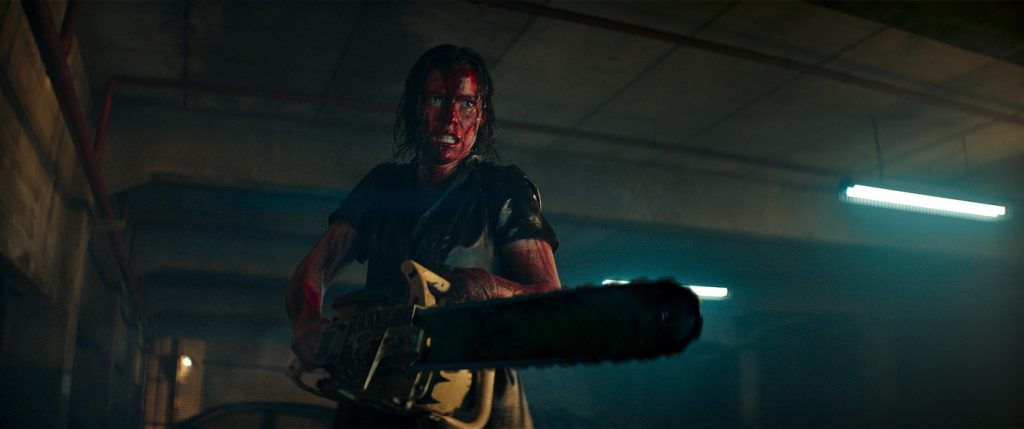
When you have a tight schedule, as you did on Evil Dead Rise, what changes are you able to make on the fly?
It was a crazy schedule. Long days, long weeks, and lots of working on the weekend at the workshop to get stuff done. We try to accommodate as much as we can. There’s not much we’ll say no to. Our head of department, [prosthetics designer] Luke Poltie, I’ve worked with a lot, and he’s always reinforced the idea it’s our job to get what they want on the screen. As long as we’re not killing ourselves or working for free, we should do what we can to get it done in a healthy way. There are always some crazy things where schedules change and days switch around, but luckily, these days, we come prepared with a backup of a lot of prosthetics for cuts, scrapes, and wounds. If the filmmakers are like, “You know what? I want to see this prosthetic on the person right now,” we can do it.
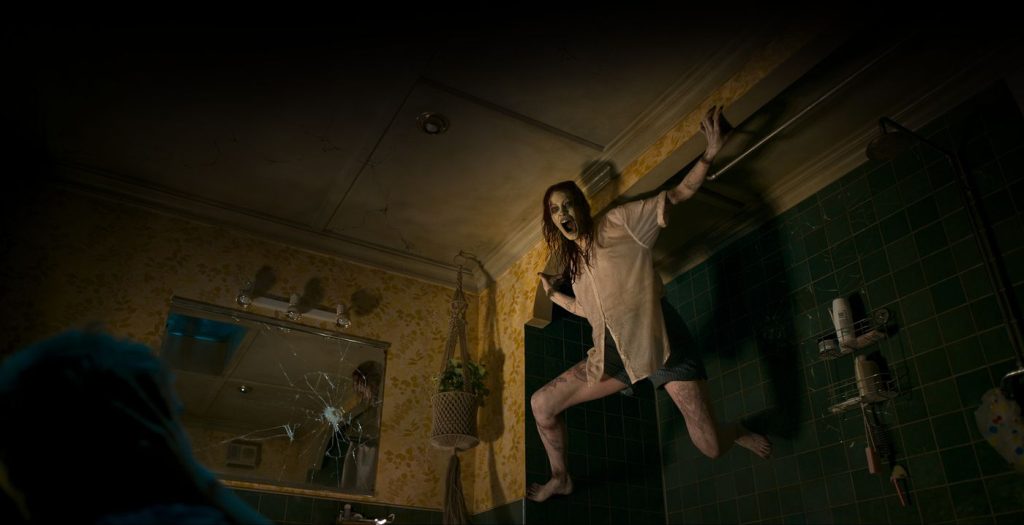
What are some recent advancements in your field that have helped speed production up, though?
I’ll say the advancement of 3D scanning and 3D printing is a huge one. Now, you can have someone in LA that needs a head scan done, and you can get it done there and emailed to you. You can print out their head and start working instead of having to get something physically shipped halfway across the world. It’s a huge benefit. Those technologies are changing so fast.
Evil Dead Rise is in theaters now.
For more on Warner Bros., HBO, and HBO Max, check out these stories:
Transportation Manager Ryan Doucette on How Warner Bros. Turned “Kung Fu” Season Three Green
“Godzilla vs. Kong” Sequel Gets its Title
James Gunn Announces Pre-Production Has Begun on “Superman: Legacy”
Featured image: Caption: ALYSSA SUTHERLAND as Ellie in New Line Cinema’s horror film “EVIL DEAD RISE,” a Warner Bros. Pictures release. Photo Credit: Courtesy of Warner Bros. Pictures


